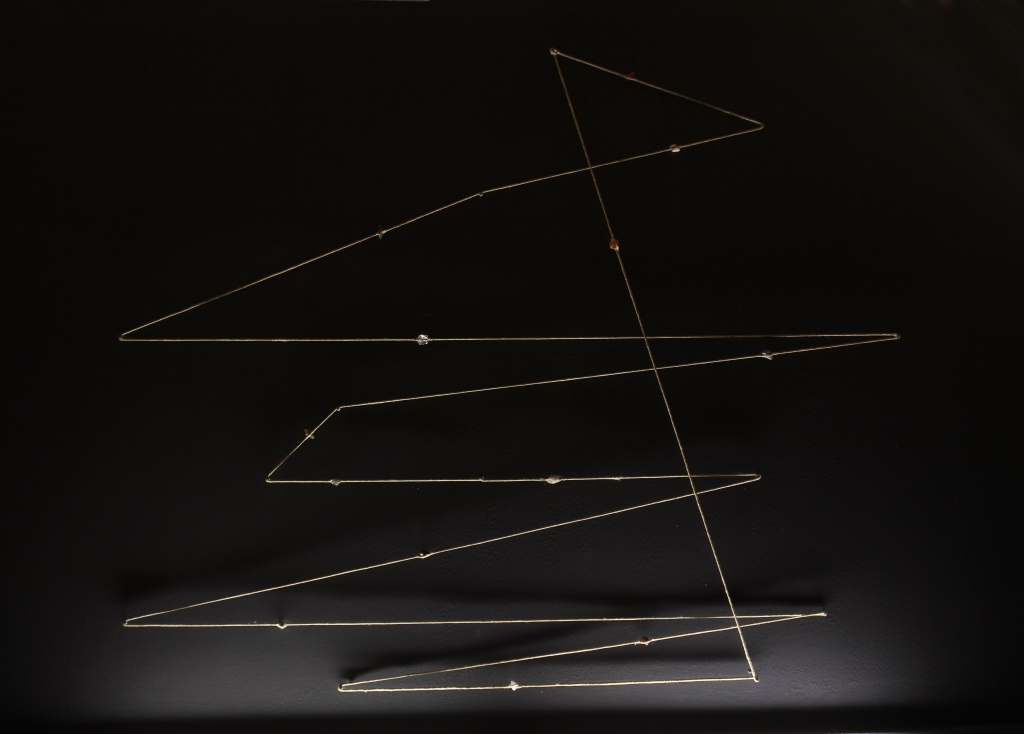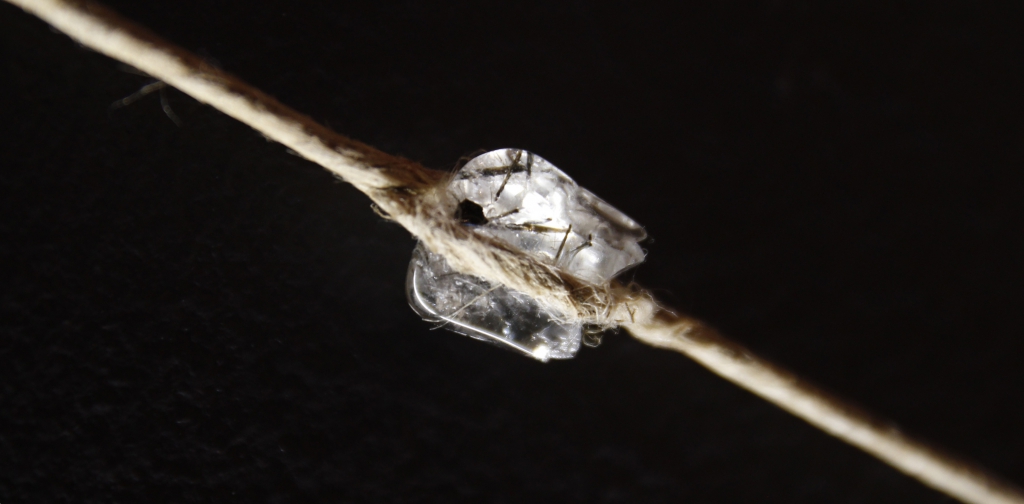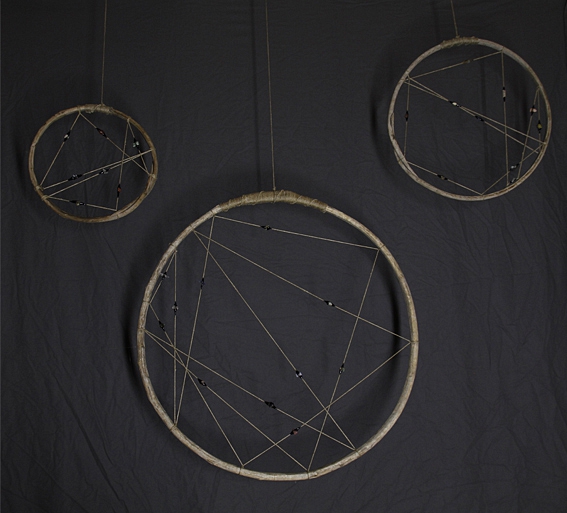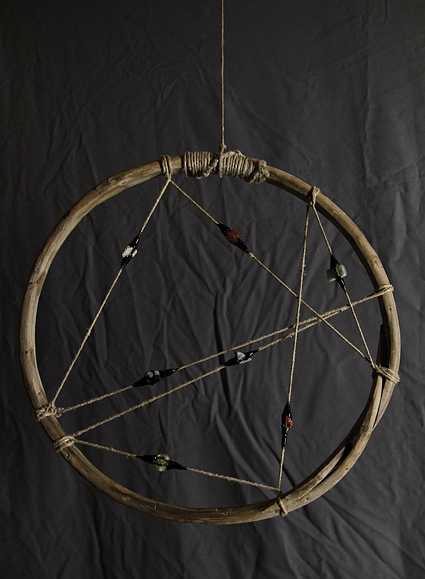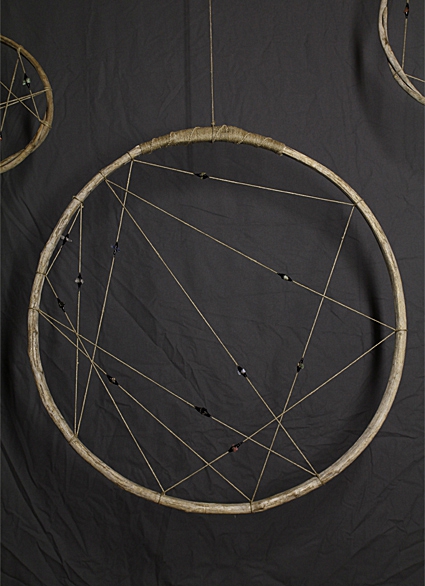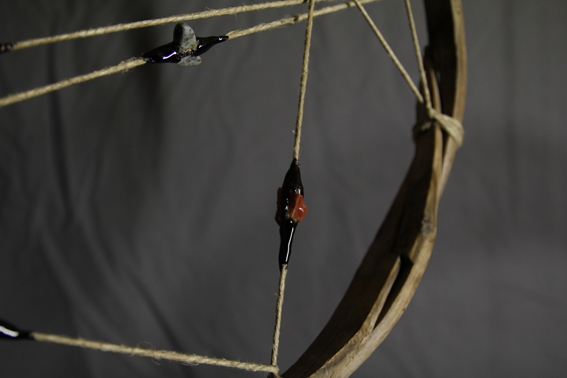'I found stones at the world's onset.' Roger Callois
These Orphic lapidaries are here set up like active graphs which transmit waveforms. (refer to the Active graphs series)
To make the lapidaries, I mainly drew on the reading of texts of ancient mineralogy, writings concerning shamanistic people, or books of lithotherapy – a healing by crystals technique which is flying high since the New Age movement.
During ancient history, lapidaries, as booklets of a magical and medecinal mineralogy, bestowed significance upon crystals within man's destiny. They were dealing with stones' physical, medical and talismanic properties, referring to the theory of channeling and affinities.
This movement did not started during the Hellenistic era, however. The belief in gems' magical virtues seems to be as old as man. Jewish and Christian customs gave the lapidary writing some signifcant works, notably in the Exodus, in which the Hebrew high priest's chest is adorned with twelve active gems.
In both North and South America, as well as in Australia, Southeast Asia and elsewhere, shamans peculiarly regard crystals. Their most widespread use within shamanistic traditions last for thousands of years. (Mircea Eliade, Le chamanisme)
Interest in crystals was already visible during the Paleolithic. Not only did our ancestors seek crystals because of their brightness, they also seemed to think owning crystals granted them some surnatural healing power. (René de Saint-Perier)
Appeared in the very 'Surrealism' (#3, fall 1957), André Breton's Langue de pierres ('Stones tongue') brings forward the idea of 'visionary mineralogy' which would act like a drug in the mind and turn one extra clear.
These Orphic lapidaries are here set up like active graphs which transmit waveforms. (refer to the Active graphs series)
To make the lapidaries, I mainly drew on the reading of texts of ancient mineralogy, writings concerning shamanistic people, or books of lithotherapy – a healing by crystals technique which is flying high since the New Age movement.
During ancient history, lapidaries, as booklets of a magical and medecinal mineralogy, bestowed significance upon crystals within man's destiny. They were dealing with stones' physical, medical and talismanic properties, referring to the theory of channeling and affinities.
This movement did not started during the Hellenistic era, however. The belief in gems' magical virtues seems to be as old as man. Jewish and Christian customs gave the lapidary writing some signifcant works, notably in the Exodus, in which the Hebrew high priest's chest is adorned with twelve active gems.
In both North and South America, as well as in Australia, Southeast Asia and elsewhere, shamans peculiarly regard crystals. Their most widespread use within shamanistic traditions last for thousands of years. (Mircea Eliade, Le chamanisme)
Interest in crystals was already visible during the Paleolithic. Not only did our ancestors seek crystals because of their brightness, they also seemed to think owning crystals granted them some surnatural healing power. (René de Saint-Perier)
Appeared in the very 'Surrealism' (#3, fall 1957), André Breton's Langue de pierres ('Stones tongue') brings forward the idea of 'visionary mineralogy' which would act like a drug in the mind and turn one extra clear.
